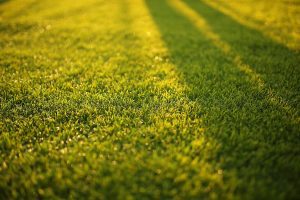
There has been a trend and a lot of talk about the water-saving benefits of artificial turf. At Emerald Sod Farms, we care about this topic and want to make a case for natural grass, especially here in Colorado. Let’s compare them in regards to cost, maintenance, and environmental impact.
Cost of Natural Grass v Artificial Turf
Pricing is the biggest difference when comparing natural grass versus artificial turf. While pricing will vary based on where you live, artificial turf will cost about three times the price of fresh sod, both professionally installed. For example, installed sod, including preparing the ground prior to installation, will be about $3.50 per square foot, where turf installation will be closer to $9 per square foot.
In a 1,000 square foot project, it would be a difference of $3,500 versus $9,000 respectively.
Maintenance of Natural Grass v Artificial Turf
If natural sod wins in the cost category, artificial turf wins in regards to maintenance. Obviously, artificial grass requires no watering, mowing, fertilizing, or aeration. Life expectancy is about 25 years. However, turf doesn’t absorb pet waste, and it can get hot in the sun.
With natural grass, it is important to pick the right type for the climate to create a beautiful lawn perfect for your space and goals. A healthy lawn will take time and require maintenance. Installing sod will give you a great looking lawn very quickly, and using a sprinkler system will help with automating watering.
Proper watering, mowing, weeding, aeration, and fertilization is required, however, it can create a sense of pride and a cool, welcoming feel even during hot summer months. Some even find natural grass, especially when part of a well-planned landscaping plan, creates a beautiful, serene outdoor environment.
Environmental Impact of Natural Grass v Artificial Turf
While artificial turf clearly saves a homeowner from spending money on water, the petroleum product isn’t fully environmentally friendly. Even turf made from recycled materials doesn’t fully biodegrade and will end up in a landfill after it’s run its lifespan, or is removed or replaced.
Some fans or artificial turf say it also helps reduce air pollution caused by natural lawn maintenance tools like mowers. They also mention the lack of use of fertilizers. However, research has shown that artificial turf contains PFAs (polyfluoroalkyl chemicals), which have been linked to several diseases including cancer. These chemicals don’t degrade completely and have caused enough concern that schools, parks, and recreational field owners are looking to have them eliminated.
Natural grass can account for up to 33% of water use for a homeowner. This is especially true in dry climates. Some landscape projects, such as xeriscape, limit the use of grass for this reason and use smaller areas of natural grass for children’s play areas, decorative spaces, or pet areas so the benefits of sod can be experienced while also limiting the downsides of watering and maintenance.
If you are considering artificial turf or natural grass, our sod experts are here to help with the answers you need! Our years of experience in the Denver, Front Range, Rocky Mountain regions will ensure you get the right sod for your needs and make sure you have the facts about what it takes to have a healthy yard for your family and pets. Contact Emerald Sod today to learn more about the best sod for Colorado, applications, pricing, and sod maintenance.
